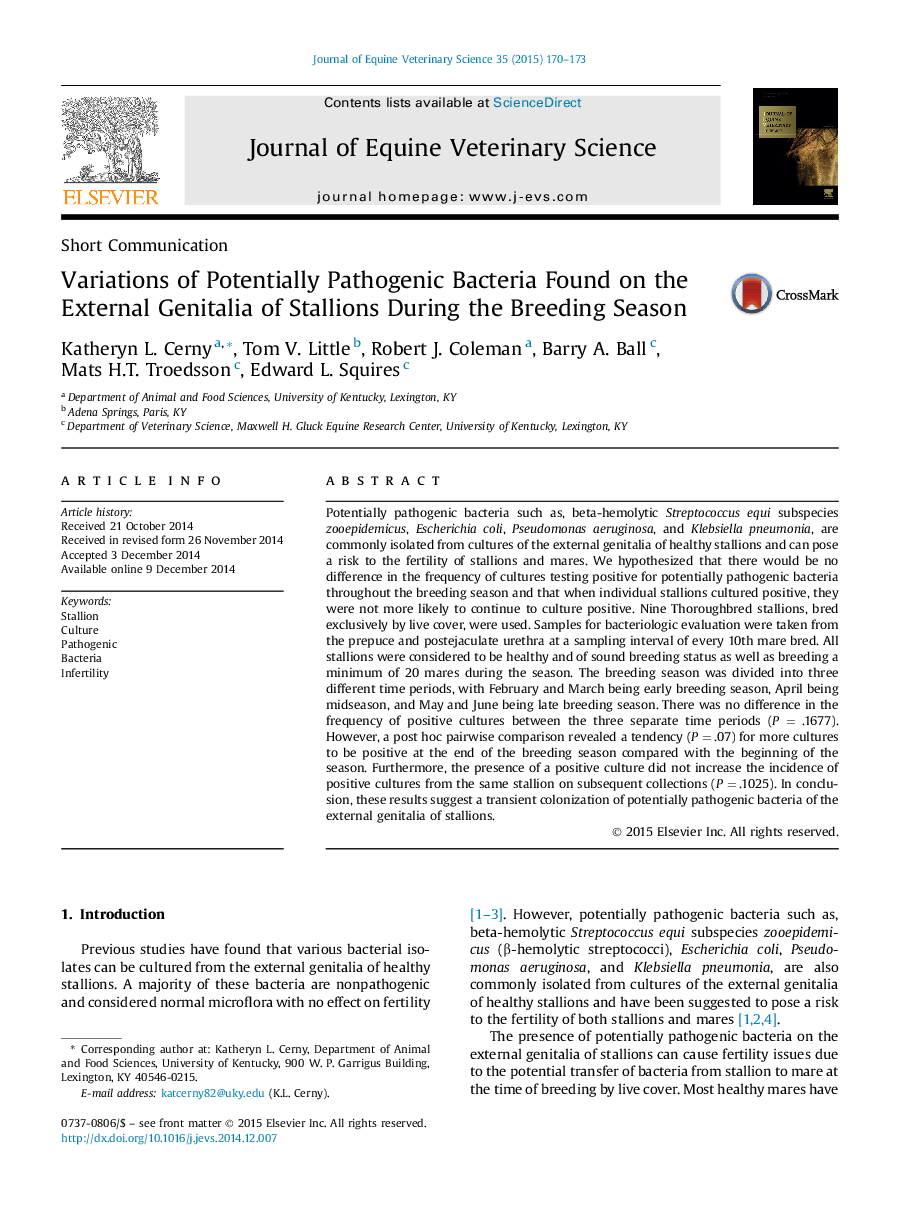| کد مقاله | کد نشریه | سال انتشار | مقاله انگلیسی | نسخه تمام متن |
|---|---|---|---|---|
| 2395013 | 1101544 | 2015 | 4 صفحه PDF | دانلود رایگان |
• We determined if there is a difference in the frequency of cultures positive for potentially pathogenic bacteria (specifically, β-hemolytic streptococci, Escherichia coli, Pseudomonas aeruginosa, and Klebsiella pneumonia) as the breeding season progressed based on cultures from the external genitalia of stallions bred by live cover.
• We determined if there is an association with an increase of positive cultures when individual stallions have already been confirmed positive on the previous culture.
• The present study focused on identifying potentially pathogenic bacteria only. The growth of β-hemolytic streptococci, E. coli, P. aeruginosa, and K. pneumonia was considered potentially pathogenic based on previous studies linking these bacteria to uterine infections in mares.
Potentially pathogenic bacteria such as, beta-hemolytic Streptococcus equi subspecies zooepidemicus, Escherichia coli, Pseudomonas aeruginosa, and Klebsiella pneumonia, are commonly isolated from cultures of the external genitalia of healthy stallions and can pose a risk to the fertility of stallions and mares. We hypothesized that there would be no difference in the frequency of cultures testing positive for potentially pathogenic bacteria throughout the breeding season and that when individual stallions cultured positive, they were not more likely to continue to culture positive. Nine Thoroughbred stallions, bred exclusively by live cover, were used. Samples for bacteriologic evaluation were taken from the prepuce and postejaculate urethra at a sampling interval of every 10th mare bred. All stallions were considered to be healthy and of sound breeding status as well as breeding a minimum of 20 mares during the season. The breeding season was divided into three different time periods, with February and March being early breeding season, April being midseason, and May and June being late breeding season. There was no difference in the frequency of positive cultures between the three separate time periods (P = .1677). However, a post hoc pairwise comparison revealed a tendency (P = .07) for more cultures to be positive at the end of the breeding season compared with the beginning of the season. Furthermore, the presence of a positive culture did not increase the incidence of positive cultures from the same stallion on subsequent collections (P = .1025). In conclusion, these results suggest a transient colonization of potentially pathogenic bacteria of the external genitalia of stallions.
Journal: Journal of Equine Veterinary Science - Volume 35, Issue 2, February 2015, Pages 170–173
